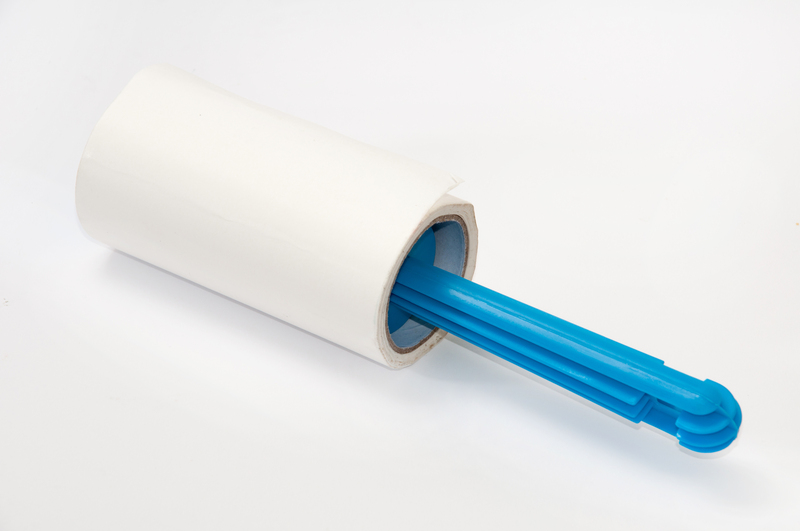Ease into Clean: A Hassle-Free Guide for Enamel Oven Trays
Posted on 08/06/2025
Ease into Clean: A Hassle-Free Guide for Enamel Oven Trays
Enamel oven trays are a staple in most kitchens, prized for their durability, heat-retention, and non-stick properties. But after rounds of roasting, baking, and broiling, their luster can fade under the weight of stubborn grease and burned-on food. If you've ever wondered how to clean an enamel oven tray without breaking a sweat or damaging its glossy finish, you're in the right place. This comprehensive, SEO-optimized guide will walk you through the easiest, most effective ways to restore your trays and keep them spotless--effortlessly!
Why Choose Enamel Oven Trays?
Before diving into cleaning techniques, it's helpful to understand why enamel oven trays are so popular:
- Non-porous Surface: The enamel coating prevents food and odors from seeping in, making these trays more hygienic.
- Heat Resistance: Capable of withstanding high oven temperatures, enamel trays are ideal for baking and roasting.
- Easy-release: The smooth coating often makes food less likely to stick--if the tray is properly maintained!
- Durability: With proper care, enamel bakeware can last for many years without chipping or warping.
However, their glossy finish demands a gentle touch during cleaning. Let's learn how to "ease into clean" with the right hassle-free methods.

Common Problems: Why Do Enamel Oven Trays Get So Dirty?
Understanding how grime builds up on enamel bakeware is half the battle. Here are the most common culprits:
- Grease Splatter--Roast chickens and baked dishes often send hot fat flying.
- Burned-on Residue--Sugary marinades and cheese can char onto the surface.
- Food Spills and Drips--Unavoidable, but not irreparable!
Without prompt cleaning, these residues can bake on during repeated oven use, making them seemingly impossible to remove.
Essential Supplies: What You Need to Clean Enamel Oven Trays
Before rolling up your sleeves, gather these supplies for a stress-free cleaning experience:
- Soft sponge or non-abrasive scrubber
- Baking soda
- White vinegar
- Mild dish soap
- Microfiber cloth
- Wooden or plastic spatula (never metal)
- Hot water
- Optional: Hydrogen peroxide, lemon juice, specialized enamel cleaner
Step-By-Step: Hassle-Free Cleaning for Enamel Oven Trays
Step 1: Let the Tray Cool and Remove Loose Debris
Before you start, make sure the tray is completely cool to the touch--quick temperature changes can cause enamel to crack. Gently scrape off large food bits using a plastic or wooden spatula.
Step 2: Soak for Effortless Removal
Fill your sink with hot water and add a generous squirt of dish soap. Let your enamel oven tray soak for 15-30 minutes. This softens baked-on food, allowing for easy removal.
Step 3: Wipe and Assess
Use a soft sponge or microfiber cloth to wipe the surface. Often, the majority of grease and residue will lift right off after soaking. Never use steel wool--it can scratch and dull the enamel coating.
Step 4: Tackle Stubborn Stains with Baking Soda
For areas with stuck-on food, sprinkle baking soda over the stains while the tray is still damp. Let it sit for 5-10 minutes, then scrub gently in a circular motion. Baking soda acts as a mild abrasive and deodorizer--safe for enamels!
Step 5: Treat Persistent Marks with Vinegar Solution
Mix equal parts white vinegar and hot water in the tray. Let it soak for another 15-20 minutes. The acetic acid in vinegar helps break down mineral deposits and tough brown marks. Rinse thoroughly.
Step 6: Dry and Polish
Rinse the tray under warm water until all soap and cleaning agents are gone. Dry with a soft cloth immediately to prevent water spots, and optionally rub a little cooking oil on the surface to maintain the shine.
Deep Cleaning for Very Stubborn Stains
If your enamel oven tray is especially grimy--from months of heavy use or neglect--try this deep cleaning method:
- Preheat your oven to 220?C/425?F. Add a thin layer of baking soda to the dry tray.
- Drizzle enough hydrogen peroxide (or substitute lemon juice) to form a paste.
- Spread this paste over stained areas and let sit for 20-30 minutes.
- Place the tray into the oven for 10 minutes, allowing the heat to activate the cleaning agents.
- Remove with oven mitts, let cool, and scrub gently. Rinse thoroughly.
Note: Always check your manufacturer's instructions before applying heat with cleaning agents!
Things to Avoid When Cleaning Enamel Oven Trays
- No Steel Wool or Metal Scourers: These will scratch the finish, making it susceptible to rust.
- No Abrasive Powders: Harsh scouring powders can dull the glossy surface.
- No Dishwasher for Hand-Finished Trays: Unless your tray is labeled dishwasher-safe, prefer hand washing to maintain its longevity.
- No Sudden Temperature Shocks: Avoid adding cold water to a hot tray; this can crack or shatter the enamel.
- No Soaking for Extended Periods: Long soaking (overnight or more) can lead to edge chipping and weaken glued joints.
Quick Tips for Daily Maintenance
Keeping your enamel baking tray in great shape doesn't require major effort--if you follow these simple habits:
- Wipe after every use--Even if there aren't visible stains, this prevents grease build-up.
- Line with parchment paper or a silicone mat for messy baking jobs (like roasted root vegetables or cheesy casseroles).
- Rinse soon after cooking--Don't let food dry out on the tray.
- Store separately--Stacking trays with metal utensils or pans can scratch the enamel coating.
Enamel Oven Trays vs. Other Bakeware
Why is enamel-covered cookware sometimes preferred over aluminum or nonstick? Here's how enamel oven trays compare:
- Enamel vs. Aluminum: Enamel resists acidic foods and won't react or cause off-flavors. It's less likely to warp.
- Enamel vs. Nonstick-Coated: Nonstick surfaces tend to scratch and degrade faster. Enamel is more robust and less likely to leach chemicals when used properly.
- Enamel vs. Stainless Steel: Stainless steel is virtually indestructible but can be very sticky without a good oiling. Enamel offers natural non-stickiness and easier clean-up.
If you prefer longevity and versatility, enamel trays are an excellent choice--with the right care!
Frequently Asked Questions
Can I Use Oven Cleaner on Enamel Trays?
Most oven cleaners are too harsh for enameled cookware and may cause discoloration or pitting. Stick to baking soda, vinegar, and mild dish soap.
Is Dishwasher Safe for All Enamel Trays?
Check the manufacturer's directions. High-end, hand-finished enamel trays often require hand washing. Consistent dishwasher use may cause the coating to fade or chip on some brands.
How Do I Remove Metal Marks or Minor Scratches?
Use a paste of baking soda and water to gently rub out marks. For deeper scratches, there's unfortunately no repair, but regular seasoning with a drop of oil can minimize their appearance.
Are There Enamel-Safe Commercial Cleaners?
Yes! Look for cleaners labeled as safe for porcelain or enamel surfaces. Popular brands include Bar Keepers Friend (make sure to use the non-abrasive cream) or Weiman's Glass Cooktop Cleaner.
Extending the Life of Your Enamel Oven Tray
- Never heat an empty tray--Always add food or oil before preheating in the oven.
- Use silicone or wooden utensils--Avoid metal, which can chip or scratch the surface.
- Store in a dry place--Humidity can get under chipped enamel and lead to rust formation.
- Repair minor chips--Use a food-safe enamel repair kit to touch up areas and prevent spreading damage.
A well-maintained enamel oven tray can deliver decades of reliable, delicious results!
Eco-Friendly Cleaning Options
If you prefer green alternatives, there are plenty of natural options for cleaning enamel oven trays:
- Lemon juice: Mildly acidic, excellent for cutting grease and lifting odors.
- Salt: Works as a gentle abrasive when combined with lemon.
- Boiling water & baking soda: For deep cleans, fill the tray with boiling water, add two tablespoons of baking soda, and let sit for an hour.
These options are safe for the environment, inexpensive, and gentle on your cookware.

The Ultimate Cleaning Schedule
Consistency is key. Here's a recommended schedule for keeping enamel oven trays spotless:
- After Every Use: Quick wipe down with dish soap and warm water.
- Weekly: Soak and scrub with baking soda to prevent build-up.
- Monthly: Deep clean with vinegar solution or hydrogen peroxide paste for stubborn stains.
Conclusion: Enjoy Effortless Clean--and Lasting Performance
With these hassle-free enamel oven tray cleaning tips, you can keep your favorite bakeware in like-new condition with minimal effort. The secret is regular maintenance, immediate stain treatment, and using the right non-abrasive agents. Properly cleaned and cared-for enamel trays won't just look better--they'll deliver better-tasting meals and a more enjoyable kitchen experience.
So, next time you slide a tray into the oven, you'll have total confidence that clean-up will be a breeze. That's what we call easing into clean!
For more powerful kitchen cleaning guides, bookmark this article and share it with fellow home cooks!



